Abstract
Incubation of human leukocytes with ascorbic acid at neutral pH and at concentrations 10-50 times that of normal blood levels augmented both the in vitro random migration and chemotaxis of the cells by 100-300% without influencing their phagocytic capacity. Enhancement of mobility by ascorbate was evident for isolated neutrophils, eosinophils, and mono-nuclear leukocytes and was independent of the specific chemotactic stimulus. Stimulation by ascorbate of the hexose monophosphate shunt of adherent neutrophils and augmentation by ascorbate of neutrophil mobility had comparable dose-response relationships, could be reversed by washing the cells, and were both suppressed by preincubation of the neutrophils with 6-aminonicotinamide, but not with the neutrophil-immobilizing factor. Glutathione, the proposed intermediate for ascorbate action, similarly stimulated hexose monophosphate shunt activity and enhanced migration. The enhancement in vitro of leukocyte mobility by ascorbate at concentrations found in some normal tissues, therefore, appears to be dependent upon stimulation of the leukocyte hexose monophosphate shunt.
Full text
PDF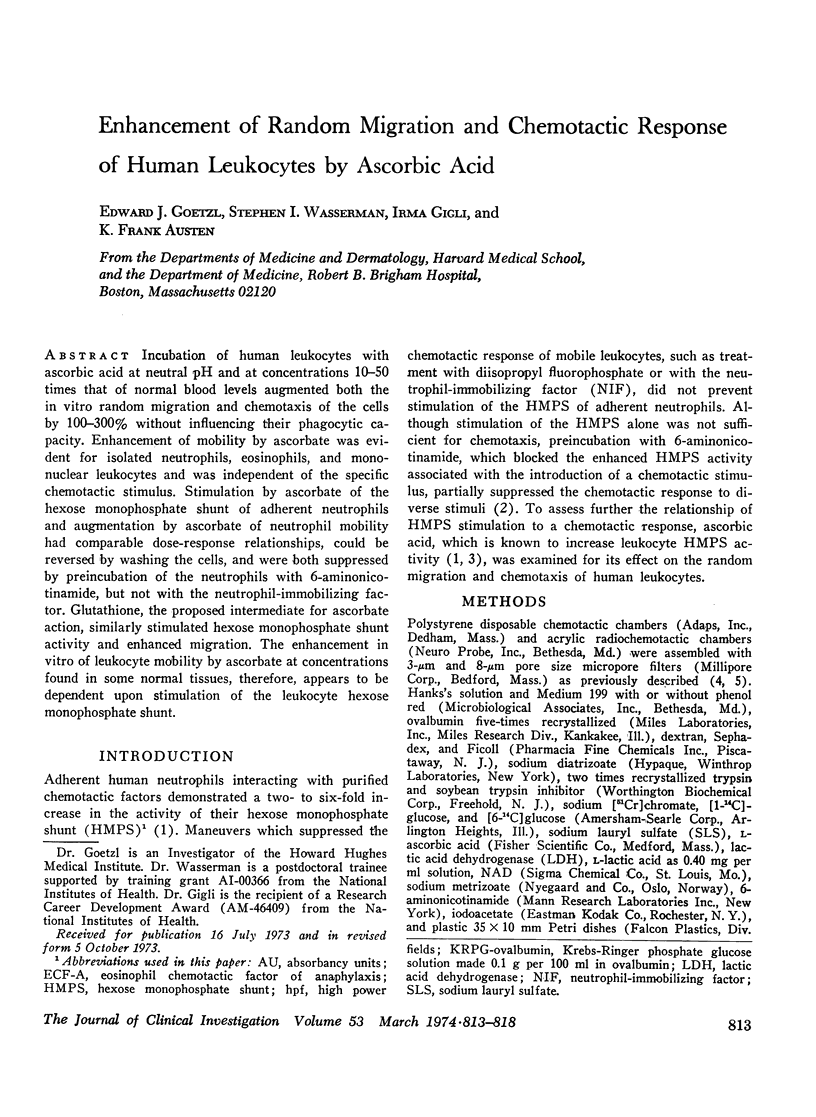
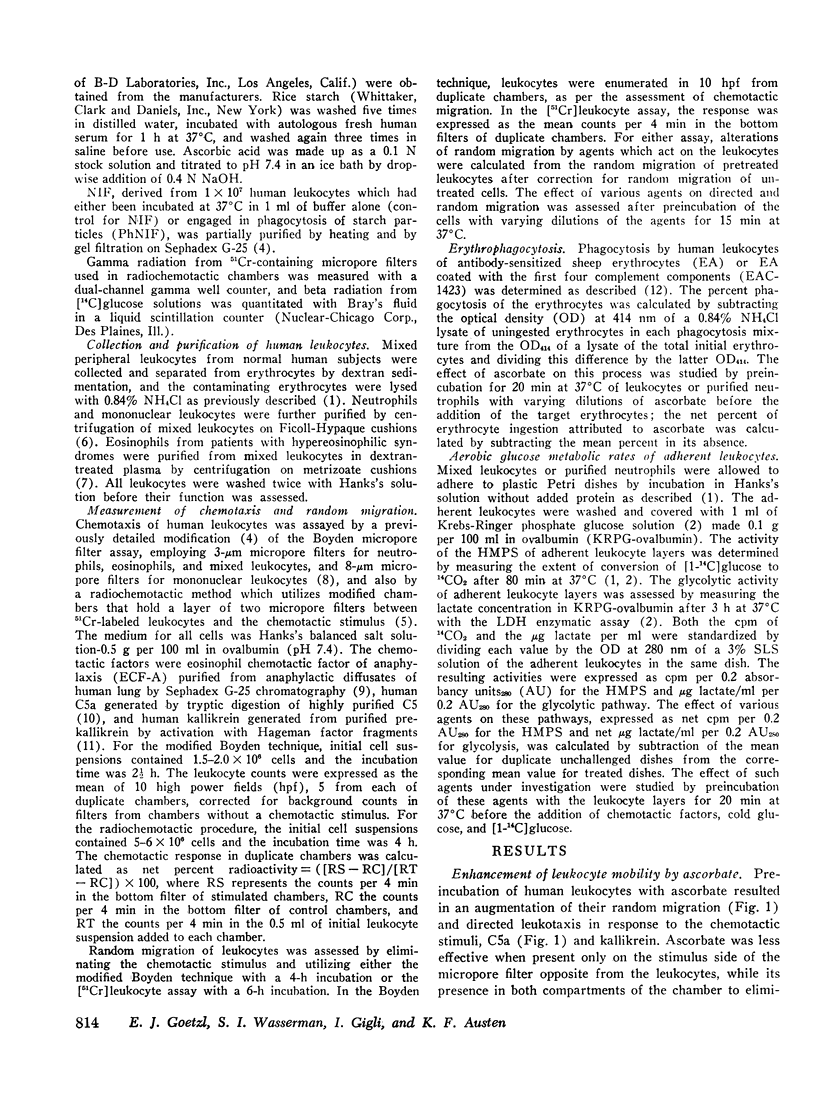
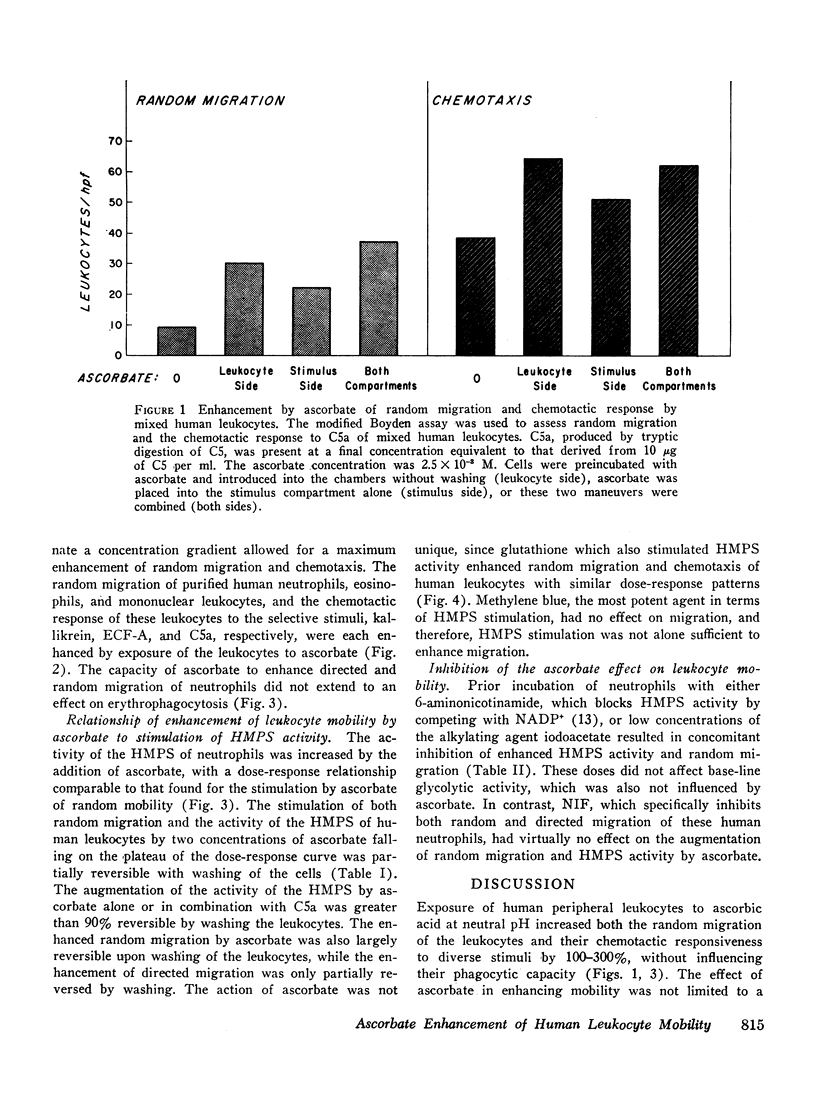
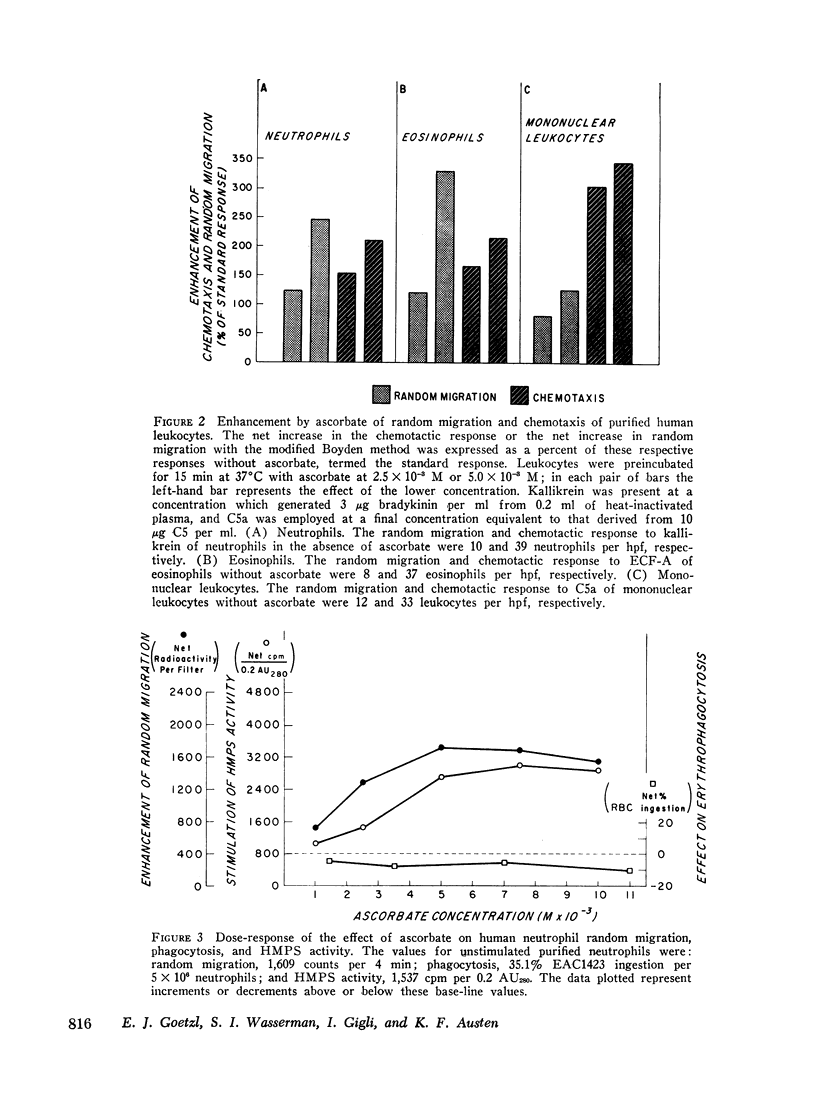
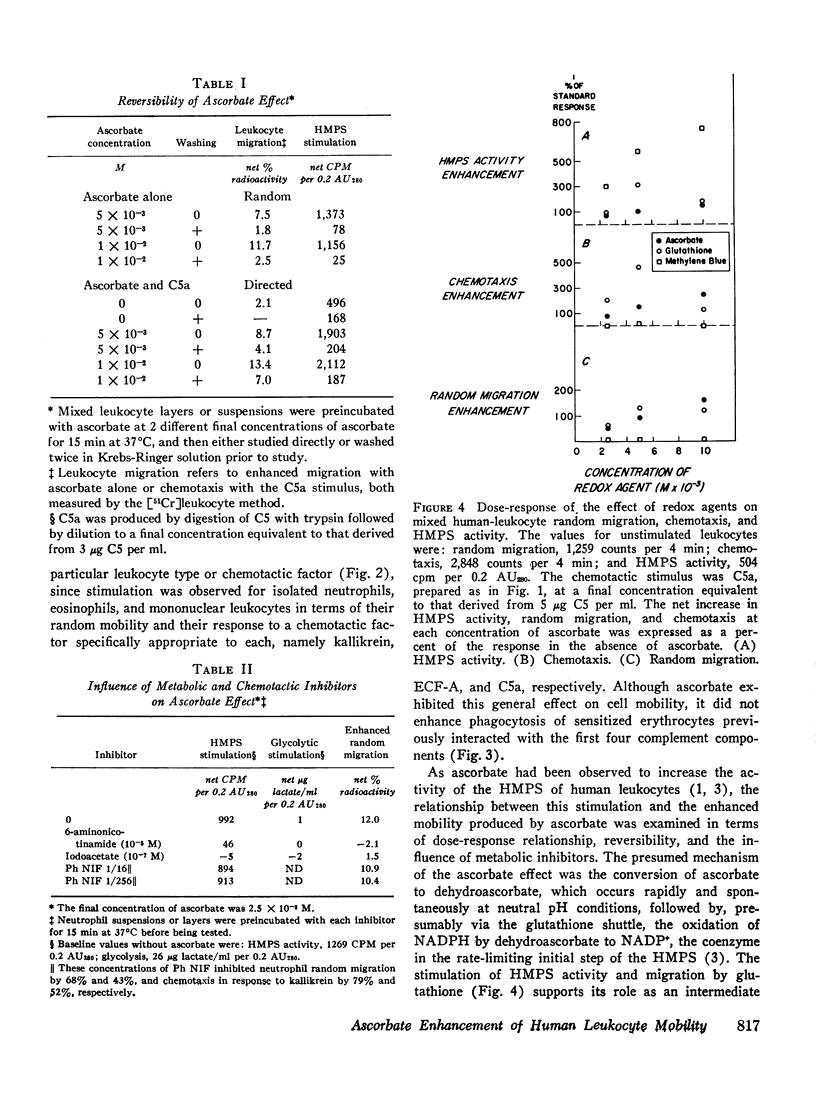
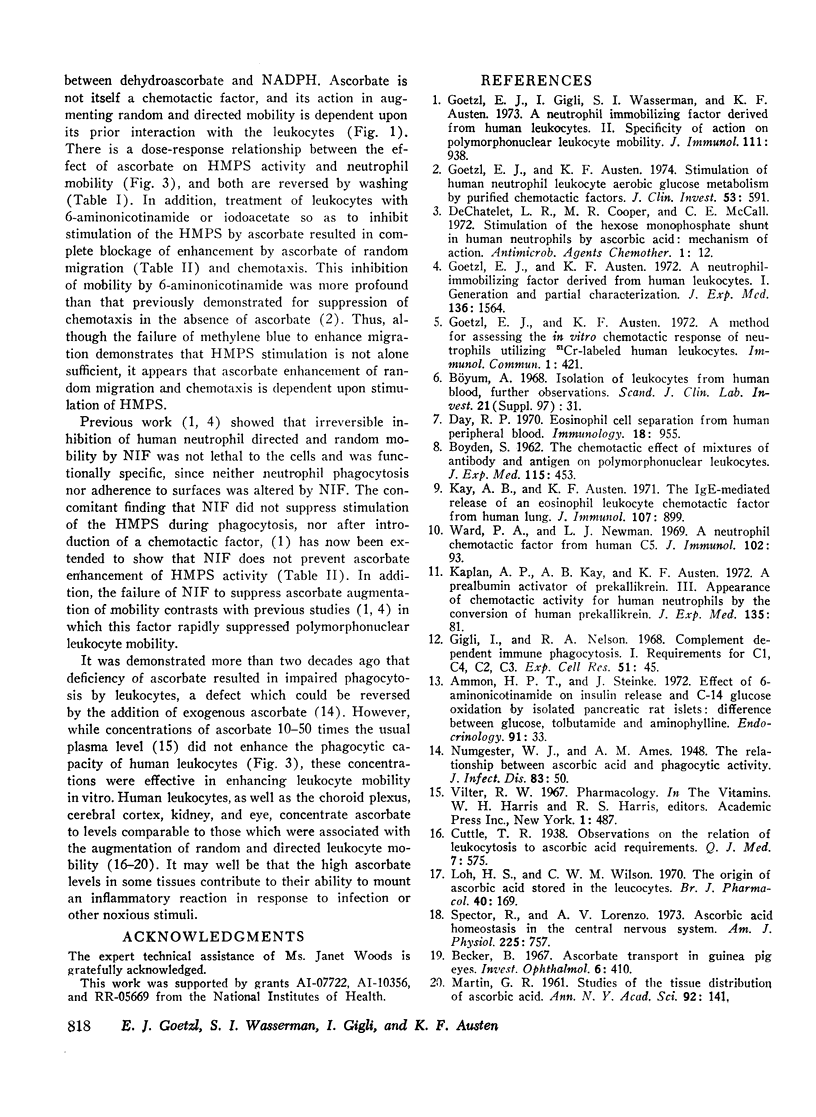
Selected References
These references are in PubMed. This may not be the complete list of references from this article.
- Ammon H. P., Steinke J. Effect of 6-aminonicotinamide on insulin release and C-14 glucose oxidation by isolated pancreatic rat islets: difference between glucose, tolbutamide and aminophylline. Endocrinology. 1972 Jul;91(1):33–38. doi: 10.1210/endo-91-1-33. [DOI] [PubMed] [Google Scholar]
- BOYDEN S. The chemotactic effect of mixtures of antibody and antigen on polymorphonuclear leucocytes. J Exp Med. 1962 Mar 1;115:453–466. doi: 10.1084/jem.115.3.453. [DOI] [PMC free article] [PubMed] [Google Scholar]
- Böyum A. Isolation of leucocytes from human blood. Further observations. Methylcellulose, dextran, and ficoll as erythrocyteaggregating agents. Scand J Clin Lab Invest Suppl. 1968;97:31–50. [PubMed] [Google Scholar]
- Day R. P. Eosinophil cell separation from human peripheral blood. Immunology. 1970 Jun;18(6):955–959. [PMC free article] [PubMed] [Google Scholar]
- DeChatelet L. R., Cooper M. R., McCall C. E. Stimulation of the hexose monophosphate shunt in human neutrophils by ascorbic acid: mechanism of action. Antimicrob Agents Chemother. 1972 Jan;1(1):12–16. doi: 10.1128/aac.1.1.12. [DOI] [PMC free article] [PubMed] [Google Scholar]
- Gigli I., Nelson R. A., Jr Complement dependent immune phagocytosis. I. Requirements for C'1, C'4, C'2, C'3. Exp Cell Res. 1968 Jul;51(1):45–67. doi: 10.1016/0014-4827(68)90158-4. [DOI] [PubMed] [Google Scholar]
- Goetzl E. J., Austen K. F. A method for assessing the in vitro chemotactic response of neutrophils utilizing 51cr-labeled human leukocytes. Immunol Commun. 1972;1(5):421–430. doi: 10.3109/08820137209022954. [DOI] [PubMed] [Google Scholar]
- Goetzl E. J., Austen K. F. A neutrophil-immobilizing factor derived from human leukocytes. I. Generation and partial characterization. J Exp Med. 1972 Dec 1;136(6):1564–1580. doi: 10.1084/jem.136.6.1564. [DOI] [PMC free article] [PubMed] [Google Scholar]
- Goetzl E. J., Austen K. F. Stimulation of human neutrophil leukocyte aerobic glucose metabolism by purified chemotactic factors. J Clin Invest. 1974 Feb;53(2):591–599. doi: 10.1172/JCI107594. [DOI] [PMC free article] [PubMed] [Google Scholar]
- Goetzl E. J., Gigli I., Wasserman S., Austen K. F. A neutrophil immobilizing factor derived from human leukocytes. II. Specificity of action on polymorphonuclear leukocyte mobility. J Immunol. 1973 Sep;111(3):938–945. [PubMed] [Google Scholar]
- Kaplan A. P., Kay A. B., Austen K. F. A prealbumin activator of prekallikrein. 3. Appearance of chemotactic activity for human neutrophils by the conversion of human prekallikrein to kallikrein. J Exp Med. 1972 Jan;135(1):81–97. doi: 10.1084/jem.135.1.81. [DOI] [PMC free article] [PubMed] [Google Scholar]
- Kay A. B., Austen K. F. The IgE-mediated release of an eosinophil leukocyte chemotactic factor from human lung. J Immunol. 1971 Sep;107(3):899–902. [PubMed] [Google Scholar]
- MARTIN G. R. Studies on the tissue distribution of ascorbic acid. Ann N Y Acad Sci. 1961 Apr 21;92:141–147. doi: 10.1111/j.1749-6632.1961.tb46113.x. [DOI] [PubMed] [Google Scholar]
- Spector R., Lorenzo A. V. Ascorbic acid homeostasis in the central nervous system. Am J Physiol. 1973 Oct;225(4):757–763. doi: 10.1152/ajplegacy.1973.225.4.757. [DOI] [PubMed] [Google Scholar]
- Ward P. A., Newman L. J. A neutrophil chemotactic factor from human C'5. J Immunol. 1969 Jan;102(1):93–99. [PubMed] [Google Scholar]


